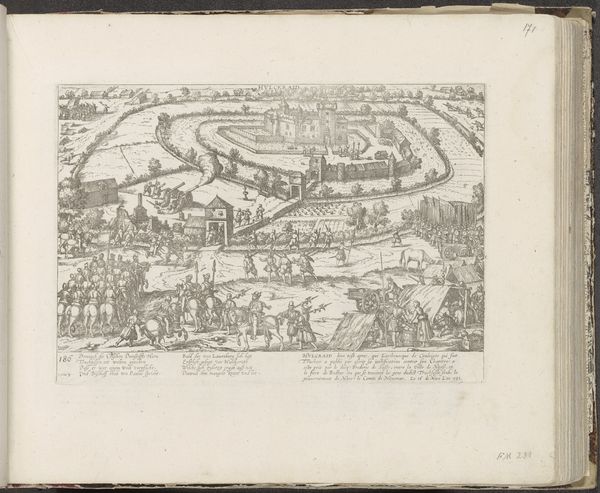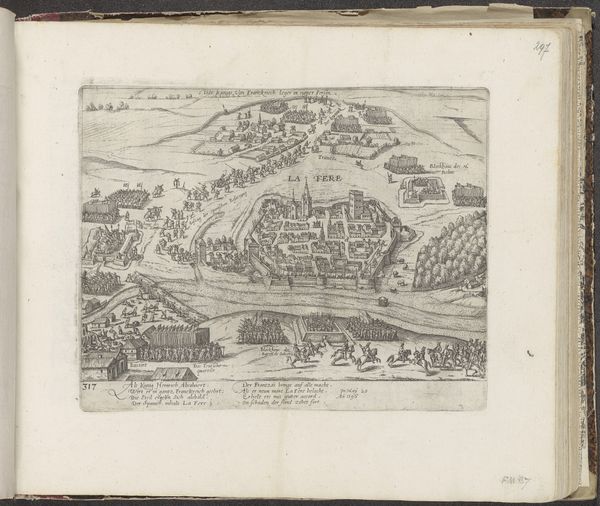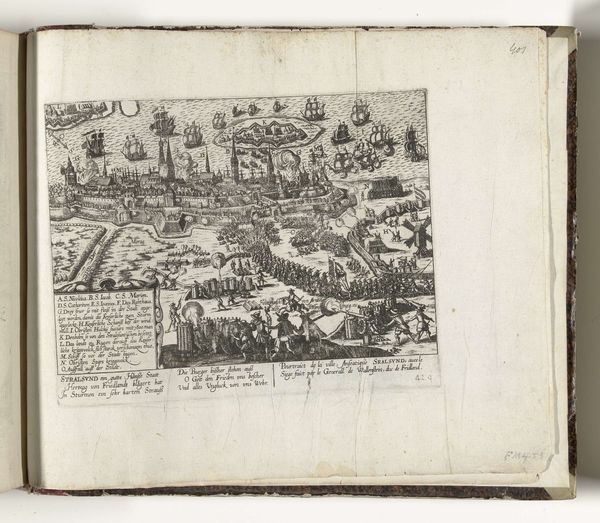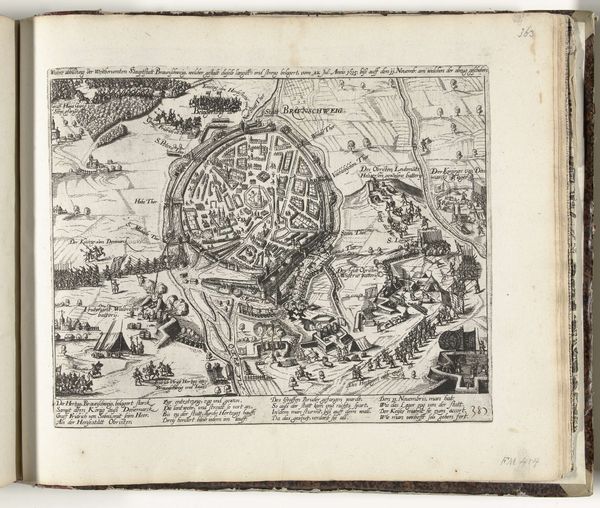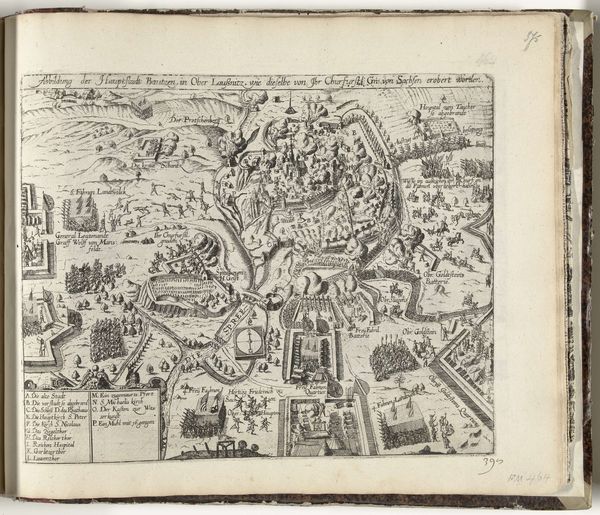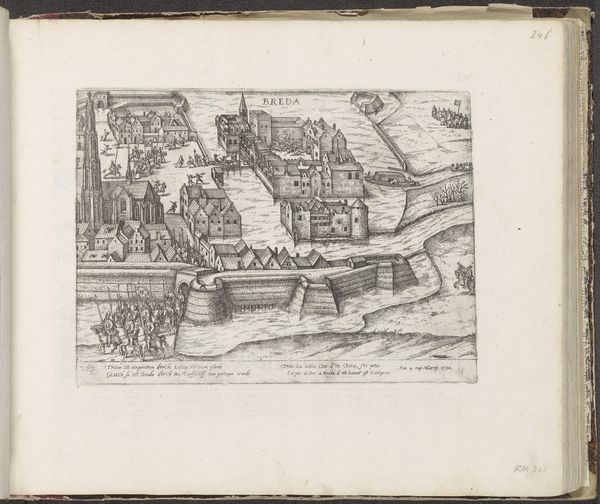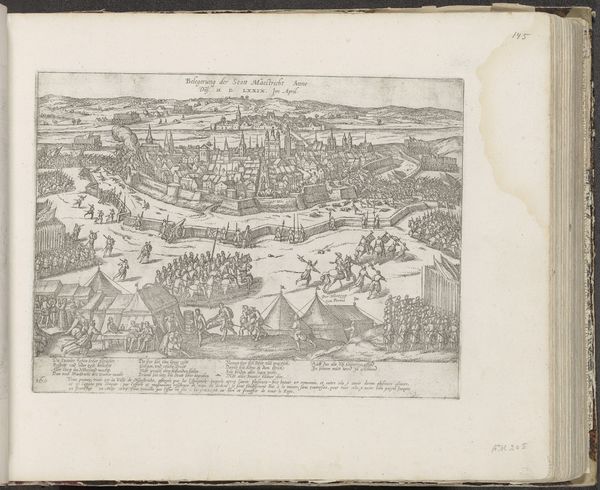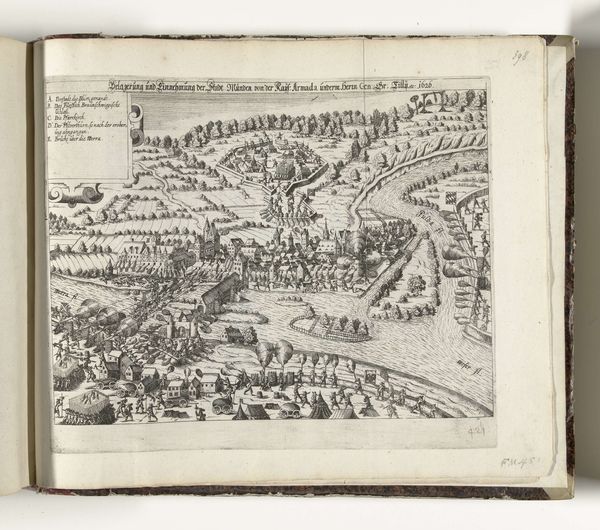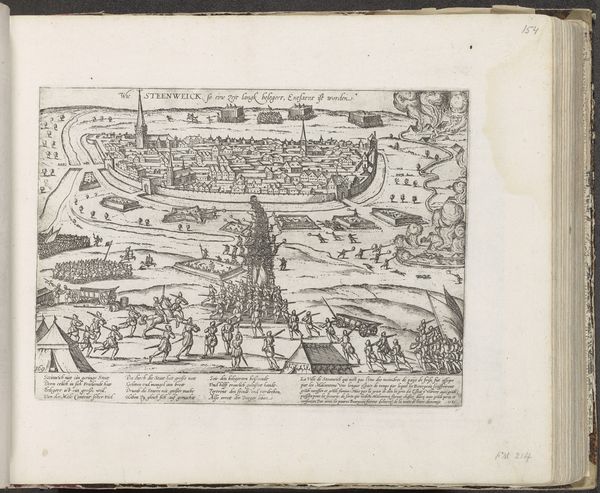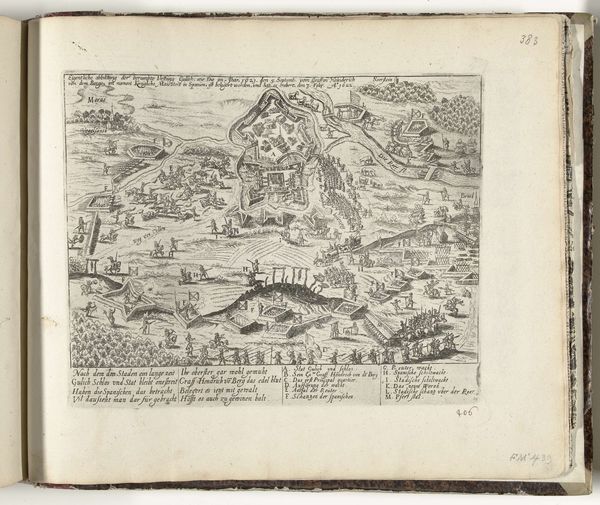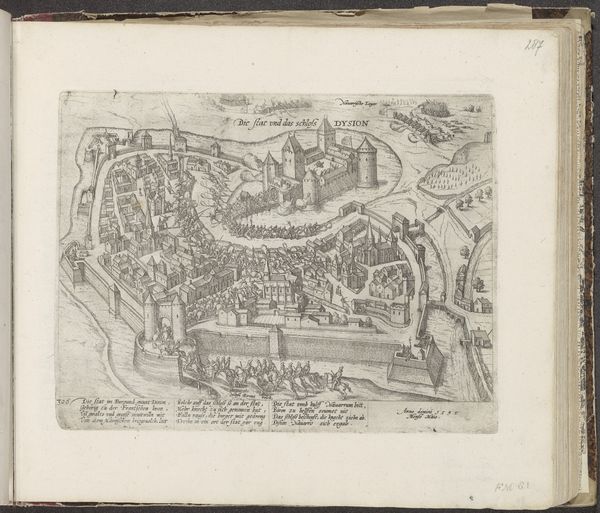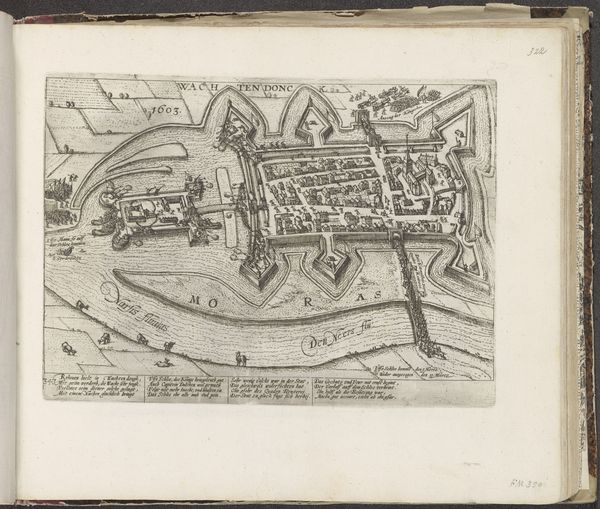
drawing, print, ink, pen, engraving
#
drawing
#
aged paper
#
toned paper
#
baroque
# print
#
pen sketch
#
sketch book
#
landscape
#
personal sketchbook
#
ink
#
pen-ink sketch
#
pen and pencil
#
pen work
#
sketchbook drawing
#
pen
#
cityscape
#
history-painting
#
sketchbook art
#
engraving
Dimensions: height 248 mm, width 280 mm
Copyright: Rijks Museum: Open Domain
Editor: We're looking at "Beleg van de schans Papenmuts, 1622," created between 1623 and 1625. It appears to be an engraving, possibly from a sketchbook, by Frans Hogenberg. The scene is quite detailed, depicting a siege. I’m struck by how the landscape seems to dominate even as it depicts a moment of violent conflict. How do you interpret this work, especially within its historical context? Curator: This image gives us a bird's-eye view of power dynamics during the Dutch Revolt. It's not just a landscape or a record of a siege. Hogenberg's choice to depict the Papenmuts fortress this way places it within a larger power struggle: the Eighty Years' War between the Dutch and Spanish empires, two forces colliding in this tiny location. How might the choice to include surrounding geography reinforce ideas of nationhood or territory? Editor: That's fascinating. The detailed depiction of the landscape alongside the siege does create a sense of place and ownership, almost as if to say, "This is our land." Curator: Exactly! And think about how maps were used in this period. They were instruments of power. Visual representations like this weren’t objective records but narratives, constructing and solidifying a sense of Dutch identity in opposition to Spanish rule. Also, notice the precise, almost detached style of engraving; how might this contribute to the authority of the image? Editor: I see what you mean. The meticulous details create an impression of truth, even though the scene is undoubtedly framed from a specific viewpoint. It is a striking piece. It shows how deeply intertwined art and politics were at the time. Curator: Precisely! It's a powerful example of how images participate in shaping identity and justifying political actions during periods of conflict. And looking at it today prompts reflection on similar dynamics still at play.
Comments
No comments
Be the first to comment and join the conversation on the ultimate creative platform.
